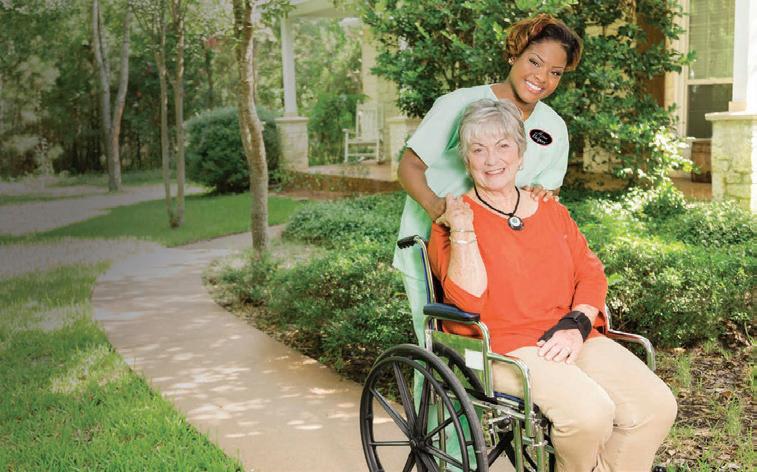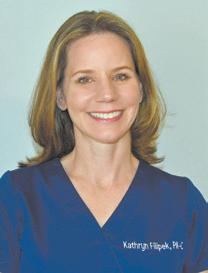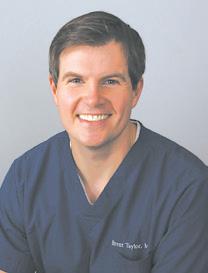
6 minute read
Youth and their mental health: meeting our students where they are
Brought
Director of Development at Summit Counseling Center
Advertisement
While the pandemic is in the rearview mirror for many, we are still riding the wave of challenges brought on by Covid-19 with specific impact on our youth. Recent studies have shown that children are facing a variety of problems including anxiety, depression, impulsivity, sleep problems, and beyond (National Library of Medicine). If left untreated, research tells us that these symptoms can lead to adverse consequences including drug and alcohol abuse, violence or self-destructive behavior, low educational attainment, and lower rates of employment in adulthood (2023 Voices of Georgia Children Factbook). Additionally, suicide rates among youth are once again on the rise, with suicide being the 3rd leading cause of death for individuals 3-17 in Georgia (2023 Voices of Georgia Children Factbook).
These staggering statistics point to the vital need for mental health services in our schools. School board members nationwide consider student mental health the most pressing issue facing schools and students today, according to a new national survey of school board members commissioned by Mental Health First Aid USA. In our state, 45% of children aged 3-17 struggle to, or are not able to access needed mental health services due to the many barriers. (2023 Voices of Georgia Children Factbook).
By partnering with local public and private schools in our community, Summit Counseling Center addresses many of the mental health challenges facing youth today. Through Summit OnSite, we currently have therapists in 31 schools providing therapy to students on a daily basis. This program aims to meet each child where they are – physically at their schools, and financially through subsidized sessions – to ensure they have access to the support they need and otherwise may not receive.
As a nonprofit counseling center, The Summit’s school-based program is one of the many ways we provide hope, healing, and restoration to our community. At our core, we strive to create a community where everyone has full access to professional, integrative mental health services without the barriers of affordability, accessibility, or stigma. To learn more about our services, visit us online at www.summitcounseling.org
We invite you to join our mission by attending or sponsoring our 8th annual Summit Gala: A Hope Full Experience on Saturday, March 25th at The Hotel at Avalon. Each year at our gala, hundreds of community leaders and Summit supporters gather to celebrate and reflect on how far we’ve come, share the joy and generosity of our community, and express our continued commitment to support mental wellness. Funds raised at this event help subsidize counseling for children, adults, and families in our community.
To learn more about attendance and sponsorship opportunities for our gala, please visit www.summitcounseling. org/gala or contact Rachel Newcomer, Director of Development, at rnewcomer@ summitcounseling.org.

Brought to You by Home Helpers of Alpharetta and North Atlanta Suburbs
While February brings thoughts of those we love and Valentine’s Day cards, the best gift of all is to remember it’s also American Heart Month. Heart disease is the leading cause of hospitalization for those over age 65 and is still the leading cause of death in this country. Over 800,000 deaths a year are due to cardiovascular disease. The good news is it’s largely preventable, so let’s review how to improve and maintain your heart health.
Monitoring your blood pressure is a key indicator of where you stand with your heart health. Yet only 48 per cent of people aged 50 to 80 who take medication or have a health condition affected by high blood pressure (or hypertension) monitor it on a regular basis. Preventing hypertension lowers your risk of heart disease and stroke. So setting a regular schedule and getting a blood pressure monitor you can learn to use at home is the start of knowing the numbers for your heart health journey.
Eating a healthy diet with a variety of food with potassium, fiber, protein, and importantly is lower in salt is critical. Flavor your food using more spices, eat salads and steamed vegetables. Select grilled poultry or fish and avoid heavy sauces, salad dressings and fats. This will help you get to or keep a healthy weight.
Staying physically active and reducing stress comes next. Moderate walking or other forms of physical exercise can do wonders. While 150 minutes of moderate activity a week is recommended, be sure to check with your doctor about forming a personalized plan of action and regular visits that are right for your current health status. Social isolation can also impact your stress levels, so staying in touch with friends, community groups and family is an important part of the picture.
Sleep is emerging as an ever increasing factor in heart health. It keeps your blood vessels healthy, and not getting enough sleep on a regular basis correlate to increased rates of stroke, high blood pressure and heart disease. Aim for a regular schedule and seven to eight hours of sleep.
Stop smoking and be careful about alcohol consumption for a healthy heart. So, if this is an issue, monitor your use and start a plan to cut back.
At Home Helpers, we know how important a skilled and well-matched Caregiver is to helping an older loved one maintain their heart health. Whether it’s making sure a moderate walk can be done without fear of a fall risk, regularly monitoring blood pressure and vital signs, following a nutritious diet, keeping a regular sleep schedule, or creating social bonds to battle loneliness, we strive to make each day the best it can be.
Our heart centered Caregivers can assist with all personal care, help around the house, safely speed up recovery from surgery, or provide specialized care for Alzheimer’s, Dementia, Parkinson’s, etc.


We’re here to help - from six hours a day, several days a week to 24/7 and livein care. For a free consultation contact Home Helpers of Alpharetta and North Atlanta Suburbs today at (770) 6810323.

Sunshine on healing skin — one step forward, two steps back?


The most common pre-cancerous lesion dermatologists treat is the actinic keratosis or “AK.” These rough growths are often frozen with liquid nitrogen and gone in a zap. Sometimes, however, a patch of skin is covered with precancerous lesions. One almost doesn’t know where to start. For such a patient, the correct treatment is often not to spray twenty or thirty AKs with liquid nitrogen. If the whole patch of skin is affected with precancerous lesions, then spot treatments like liquid nitrogen zaps will just result in a game of whack-a-mole. One AK is beaten down only to have one or two more pop up by the next visit.
Field damage demands field treatment. Rather than spot-treating individual AK’s, an entire patch of skin can be treated with certain creams and therapies to reduce the number of precancers and the amount of sun damage in an entire area. Field treatments like fluorouracil cream, imiquimod cream, and photodynamic therapy (“blue light therapy”) can reduce the AK burden across an entire zone such as the entire scalp or face. These treatments reduce the number of future cancers and get the number of AK’s back down to a reasonable number.
I often recommend field treatments to my patients but with one big caveat. I tell them, “Don’t undergo a field treatment unless you can stay out of the sun during the treatment and for a week or so afterwards.” I advise patients that I am worried that sun damage on skin that is being treated or is recovering may not only cancel out the benefits but might leave them worse off.

Why the worry? Am I overcautious? I believe not. I’m concerned about more than just a little sunburn. I’m concerned about the sun hitting cells when they are at their most vulnerable: when they are replicating – such as when cells fill in tiny wounds and even micro-gaps created from the killing of precancers like AKs.
Every system has its vulnerabilities, and our DNA repair processes are no different. Our cells’ repair processes work well during the resting phases of cell life when they are happily performing their usual functions. But when a cell decides to duplicate its DNA and divide into daughter cells in a process called mitosis, some of the repair processes are temporarily shut down.
Remember in the movie Jurassic Park when getting the park back online requires temporarily turning everything off? The electricity to the fences had to be shut off, too, and some of the carnivorous dinosaurs escaped and wreaked havoc. Well, the same thing happens in our cells when they duplicate their DNA and divide from one cell into two cells. When cells synthesize new DNA, many of the DNA repair processes are temporarily turned off to allow DNA duplication and cell division to take place. If a mutation, such as from sunlight, occurs when the repair systems are off, then the mutation is often not corrected. The resulting daughter cells are permanently affected with the mutation. Such mutated cells can develop into cancer.
Field treatments like fluorouracil, imiquimod and photodynamic therapy kill bad cells. The healthy neighbor cells must then start dividing to take the place of the bad cells. More cells dividing means more cells with DNA repair processes in the “off” position. Treatments aimed at eliminating cancerous lesions temporarily create a vulnerable state.
Advice to avoid the sun during AK treatments is not just a case of preventing your usual sunburn or of healing skin being more sensitive. Healing skin is more susceptible to mutations and DNA damage from sunburns than resting skin is. Biology argues against taking a “cheat day” and getting sun exposure during or after any treatment that requires skin to heal. If you find yourself in need of field treatment such as PDT, fluoruracil or imiquimod, remember it is only a good idea if you can stay out of the sun during the entire treatment and for the time it takes afterwards for your skin to repair itself.






